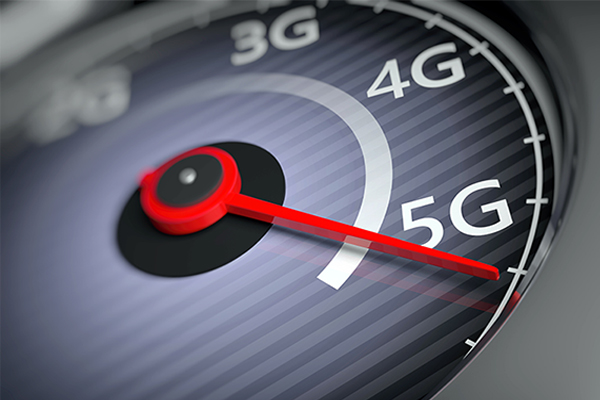5G Technology Benefits
The next mobile technology revolution is already here, and it could radically change how you provide logistics services.
Known as 5G (the fifth generation of cellular technology), all types of mobile, connected devices will see vast improvements in speed, responsiveness, capacity, and other areas.
5G isn’t an inapplicable concept or technology either - it’s going to be widely adopted across multiple industries, including logistics, and has the potential to transform how your business operates.
Before we get into the specifics of how logistics service providers (LSPs) can take advantage of 5G, it’s worth exploring the overall benefits that it provides.
A Brief Overview of 5G Benefits
5G provides much better mobile connectivity than 4G, across a number of different areas:
- Speed: 5G networks will allow devices to download information 10 to 100 times faster than existing 4G services, enabling them to download extremely large files quickly.
- Capacity: 5G will have much wider bandwidth, allowing devices to upload and download multiple streams of complex data all at once.
- Latency: The interaction speeds across 5G are much quicker than existing networks. As a result, you will get a much faster response to anything that you do on a mobile device.
- Slicing: “Network slicing” means that mobile devices will be able to use multiple 5G networks simultaneously, greatly increasing the “density” of information. For example, one network could focus on location awareness, while another manages environmental monitoring.
Although 5G will deliver general benefits for individual users, some of its greatest potentials are in commerce and industry, with two-thirds of organizations planning to introduce 5G in the near future.
Read: Gartner Survey Reveals Two-Thirds of Organizations Intend to Deploy 5G by 2020
Now, let’s dig into how Logistics Service Providers (LSPs) will be able to use the fifth generation of cellular technology.
Real-Time Location Tracking for Shipments
Many logistics businesses already use the Internet of Things (IoT) devices to track the location of shipments using a combination of GPS and wireless connectivity. 5G takes that to the next level, as low latency means continual, up-to-the-second tracking of exactly where goods are.
With real-time location tracking, LSPs will gain the ability to:
- Provide live status updates to their customers
- Understand potential delays when shipping
- Use AI to optimize fleet routes, based on the latest data
- Forecast exactly when goods will arrive
These benefits will also help to increase location intelligence, optimize transport, minimize delays and help customers better prepare to receive goods.
Real-Time Location Tracking and Detailed Data at the Individual Product Level
It’s not just shipments that you can track, but 5G IoT devices can also be attached to individual items for precise identification and location. This can significantly improve warehouse shelving, inventory management, and picking and packing operations, with a detailed understanding of exactly where a specific product is at all times. In addition, tracking technology will enhance warehouse management, while streamlining inbound logistics and outbound distribution.
Detailed Product Monitoring When in Transport or Storage
5G IoT devices aren’t just limited to location and related data. Items can be environmentally monitored at the product level by dedicated IoT sensors. Subsequently, real-time information on measures like temperature, humidity, light levels, gas levels and any other areas that could impact the quality or safety of sensitive products.
With more detailed product monitoring, LSPs will be able to:
- Ensure freshness of food and other perishable items
- Help manage the safety of products that could be compromised, like chemicals or raw materials
- Deliver items to the quality the customer expects
Integrated Supply Chains Due to Deep Knowledge of Inbound Goods
Every LSP is trying to shave time off their operations. 5G allows LSPs to integrate with upstream and downstream supply chain organizations to make the handover of products faster and more accurate, empowering LSPs with:
- Confidence that everything has been sent or received due to a detailed inventory of items, backed up by IoT product-level tracking
- Faster turnaround of raw materials, parts, and products due to suppliers and manufacturers being able to accurately predict and plan for the receipt of goods
- Better resource management across organizations, based on accurate, timely data
- Synchronization across and between organizations and departments within a supply chain business
Another area that can benefit us in the handoff of data between communications networks. For example, 5G can work with other communications protocols like WiFi to allow for the transfer of information into other systems.
Self-Driving Vehicles in Communication with Each Other
Although truly autonomous vehicles aren’t prevalent on the roads yet, it’s only a matter of time.
One area where this will make the biggest difference is for the logistics industry, with self-driving trucks set to solve many of the issues with driver scheduling and regulations.
5G is essential to a fully functioning, automated fleet. Vehicles will need to instantaneously communicate with each other to maximize safety and ensure excellent awareness of other traffic, road conditions and more.
Augmented Reality for Warehouse Operations
One of the most exciting applications for 5G is augmented reality (AR), where users can see their environment with computer-generated imagery projected on top of it.
Examples of areas in which this technology can be useful include:
- Directions to shelving for storing and picking results in faster and easier storage, retrieval and distribution
- Remote operation of forklifts and picking devices through instantaneous feedback and “haptic” technology
- Inter-equipment communications that allow robots and other automated machinery to optimize routing around a warehouse
Revolutionary Last-Mile Delivery
LSPs have long wrestled with the “Last-Mile Delivery” problem - how to maximize the speed and efficiency of getting goods from a local distribution center to their final destination. 5G can help to bridge this gap, by supporting new technology like drone delivery. A remote pilot could fly a drone using video and haptic feedback; alternatively, drones may even become fully autonomous, with 5G supporting their sensors and communications.
Self-driving vehicles can also help with last-mile delivery, with vans and cars able to navigate to the customer’s location. In the future, dedicated delivery robots could transport goods in cities.
As you can see, 5G is a powerful enabler of many new logistics technologies. It’s time to embrace the change and see how your LSP can use 5G to create a competitive advantage.
Blume Logistics creates a robust network for logistics tendering, tracking, event capture, POD verification, and settlement initiation. By connecting a global ecosystem of multi-modal carriers to manage every move, Blume Logistics unites carriers - from ocean to rail to long haul - with first and last-mile drayage for the real-time event and cost tracking.
Source: Blume Global
Related Article 5G & the Future of Connectivity: 7 Industries the New Wireless Technology Could Transform
Related Resources
The Realities of Creating a 5G-Ready World
As the world tears headlong through the Fourth Industrial Revolution, 5G represents another leap forward in the way businesses and individuals connect. Download Now!
More Avetta Resources
Article topics
Email Sign Up




















